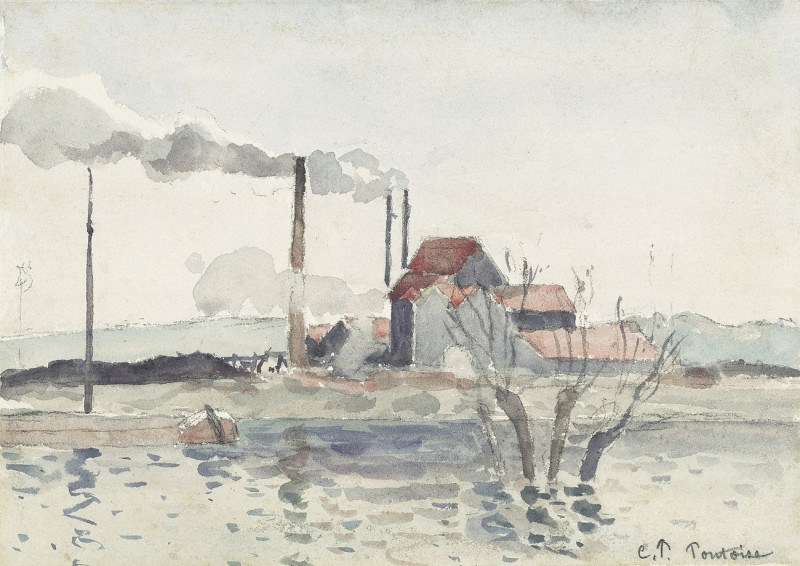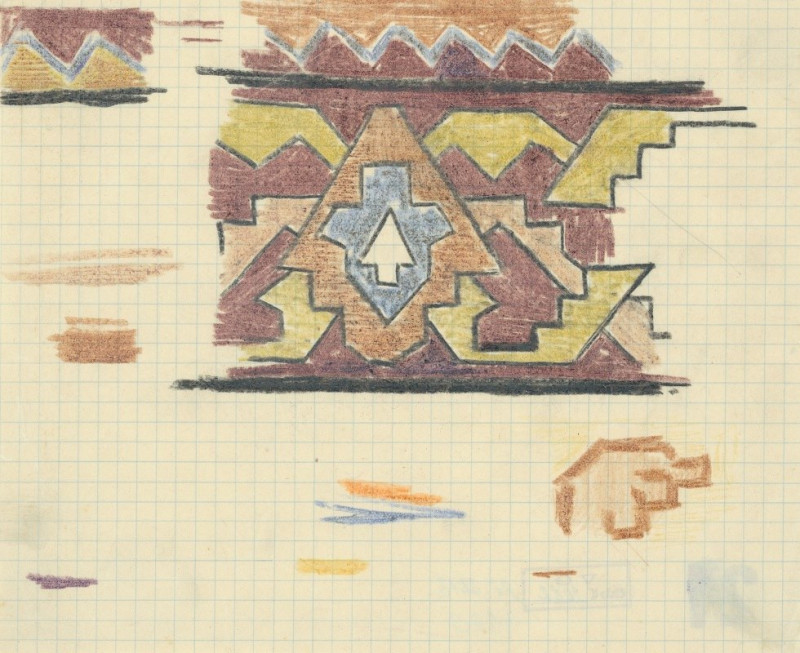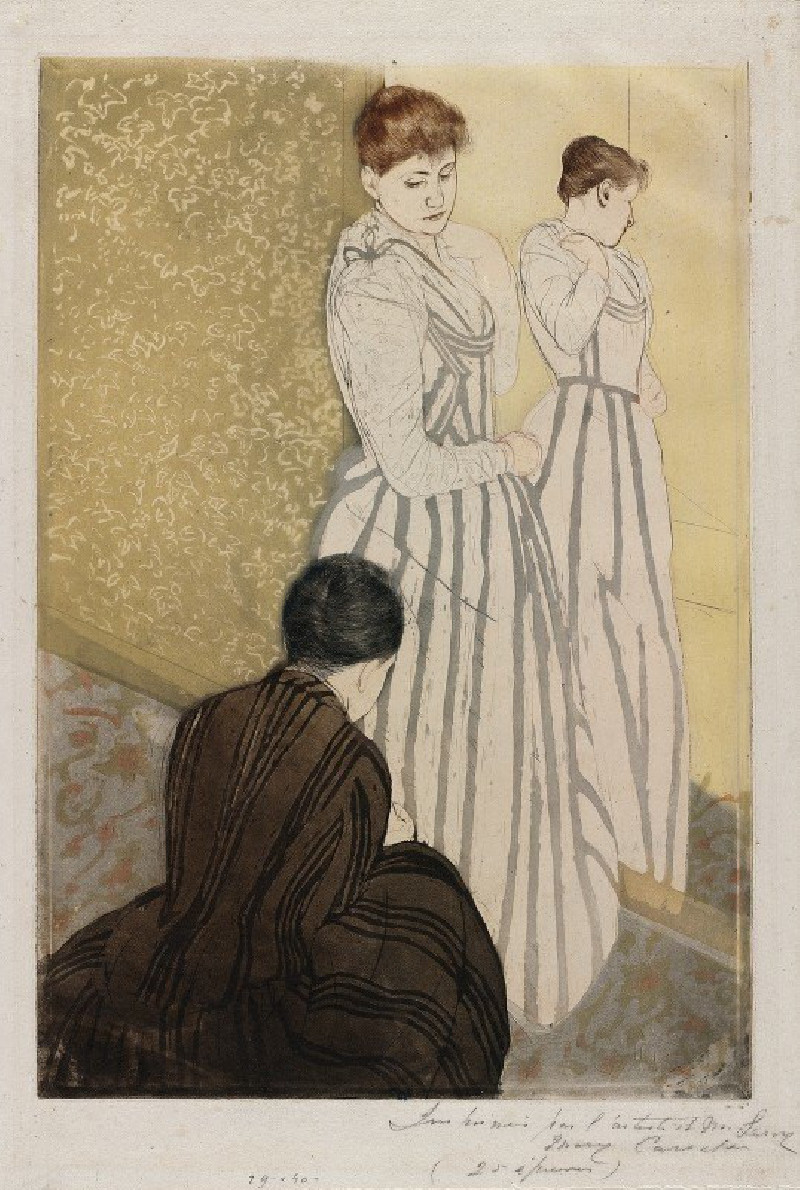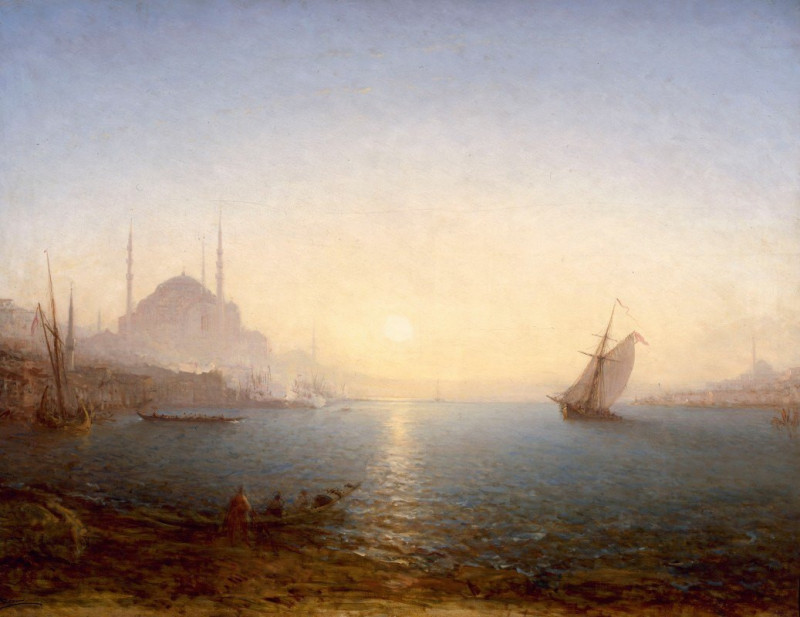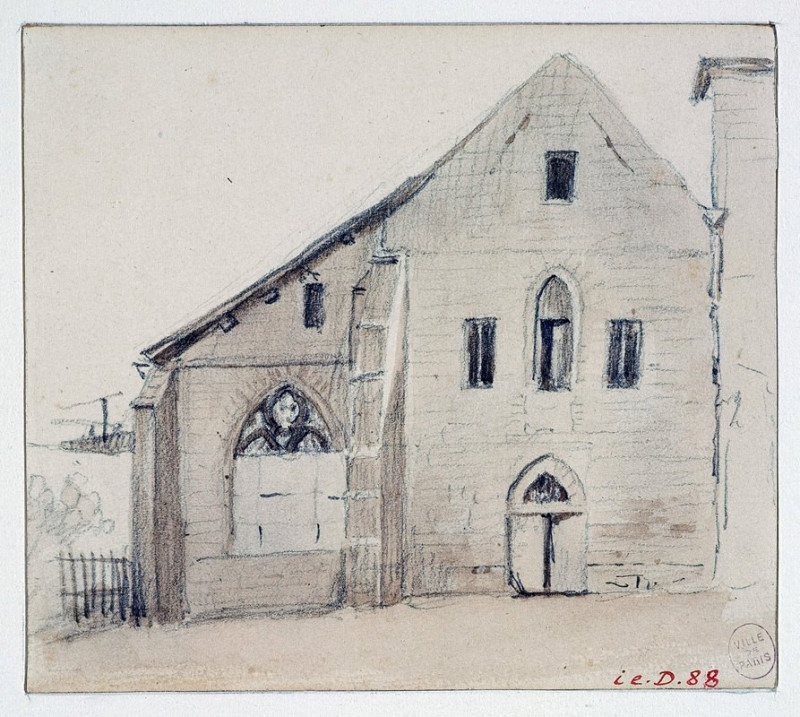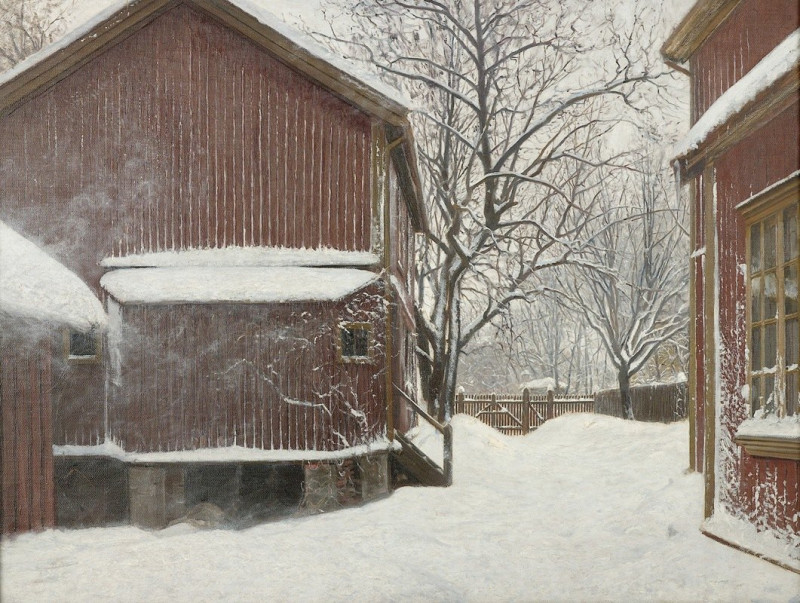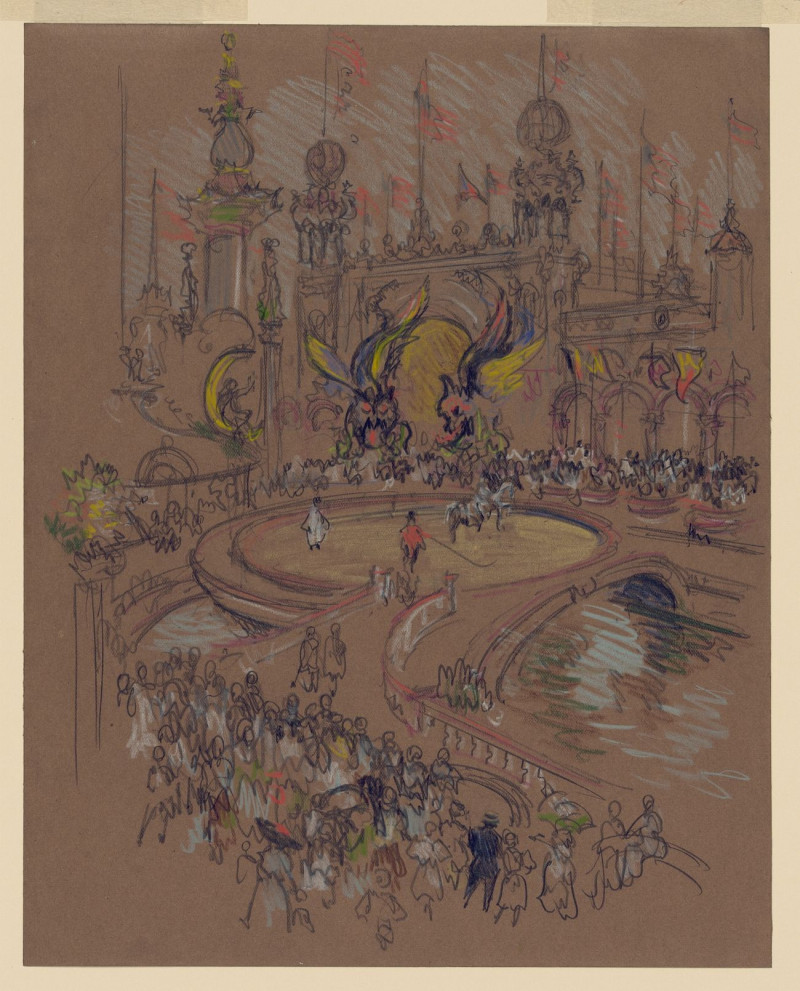Factory On The Oise At Pontoise
Technique: Giclée quality print
Recommended by our customers
More about this artwork
The painting "Factory on the Oise at Pontoise" by Camille Pissarro captures a tranquil yet industrial scene, portraying a picturesque blend of nature and human activity. This watercolor work showcases a factory set beside the River Oise, characterized by its smoking chimneys emitting plumes into the sky, suggesting the industrial activity within.The palette is muted, typical of Pissarro's style, with subtle variations of blues, grays, and earth tones that contribute to a peaceful yet somber industrial landscape. The sky is expansive, depicted with soft, broad strokes of gray and white, setting a gentle, overcast day. This sky contrasts with the more sharply defined factory buildings and chimneys, which are rendered with slightly darker tones, highlighting their presence in the landscape.In the foreground, the river is represented with light brushstrokes that give a reflective quality to the water, mirroring the sky and some aspects of the industrial structures. Elements of vegetation, like the sparsely detailed trees and bushes in the lower part, break through the dominance of the industrial scene and remind of the ongoing coexistence between nature and human-engineered environments.Pissarro's scene is devoid of vivid human activity but includes small figures near the factory, possibly workers, which provide a sense of scale and life to the scene.
Delivery
Returns
Blessed are they who see beautiful things in humble places where other people see nothing. — Camille Pissarro
Camille Pissarro (1830-1903) was born on St.Thomas (now the US Virgin Islands) to a Portuguese father and a Dominican mother. He went to Paris to study art at Ecole des Beaux-Arts. He was an early pioneer of pointillism and neo-impressionism and later became a mentor of many famous impressionist painters including Cezanne, Manet, Renoir, and Gauguin. His paintings depicted rural and urban French landscapes and lifestyle. Many of his works politically captured images of peasants and laborers. Today, he is considered the father of impressionism.

